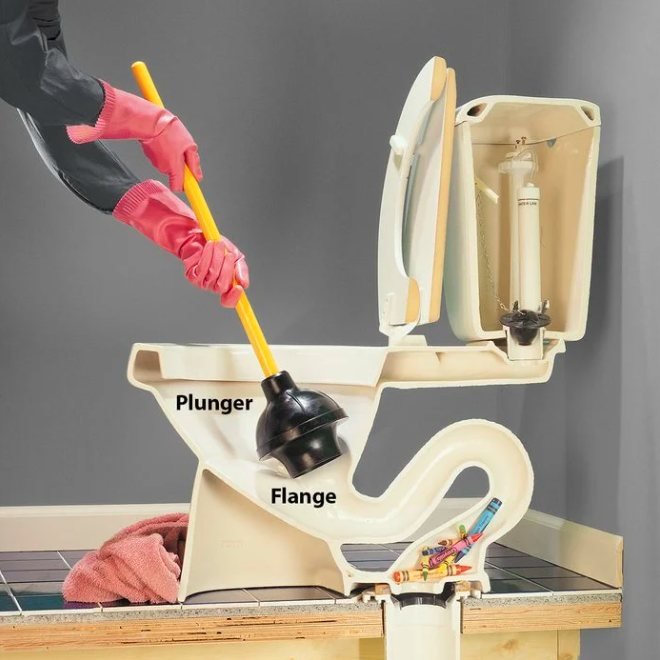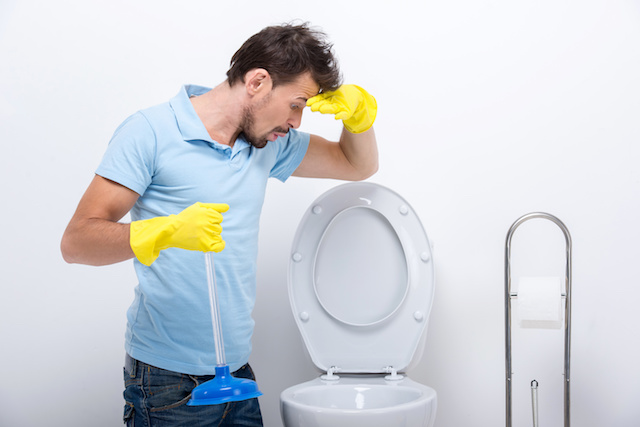It’s common to panic when the toilet overflows. If you’re a homeowner, you may be able to solve the problem without calling a professional plumber.
But if you aren’t able to stabilize the water level yourself, then a plumber is your next best bet.
If your toilet overflows, there are steps you can take after the toilet flush to regain control.
How to Stop Water Overflow

Your first step will be to cut off the water flow. This will help prevent more dirty water from sloshing onto your bathroom floor.
Don’t Flush Anymore
If you flush the toilet and immediately see excess water flowing into the toilet bowl, then you’re dealing with a major clog. The blockage in the clogged toilet is preventing the water from draining.
If you flush again, it won’t help the toilet drain. It will just make the overflow worse.
Find and Close the Flapper
Take the lid off the toilet tank. The flapper should be located on the bottom of the tank.
It is a rubber pad that connects to a fill valve, float ball, or float cup.
Push the flapper closed with your fingers. When it is sealed, it will prevent the water supply from flowing into the toilet bowl.
Shut Off the Water Supply
Next, you’ll want to shut off the supply line altogether. There should be a shutoff valve connected to the toilet.
Generally, you just have to turn the valve clockwise in order to close it.
Most toilets attach to a valve like this. But if you have a toilet without a valve, then you can go on to the next step.
Find the Float
Toilets have two types of floats: cups and balls. A float cup will be connected to the fill valve, which runs vertically from the bottom to the top of the tank.
A float ball will float on top of the water in the tank.
You want to immobilize the float so that it doesn’t move. This will keep any more water from entering the tank.
If you were able to turn off the supply valve, you don’t necessarily need to do this step.
How to Unclog the Drain

Something is causing the toilet clogs. You shouldn’t flush anything except organic material and toilet paper down the drain.
Items like baby wipes, Q-tips, paper towels, and diapers can all cause major problems. If you have a septic tank, they can harm your plumbing.
Use a Plunger
It’s a good idea to use a toilet plunger on the flange. A flange plunger is specifically designed to fit over the flange and create an airtight seal.
Put on some rubber gloves, insert the plunger into the drain, and move it up and down several times. The vacuum suction will dislodge the clog in most cases.
If the water level is low enough, you might consider using a water heater or your stove to heat a gallon of water. Then you can pour the hot water into the toilet bowl and wait an hour.
This may help dissolve the clog and make it easier to plunge.
Use a Toilet Auger
If you aren’t a professional plumber, then you may need to purchase a toilet auger at your local hardware store. But this type of drain snake is a great way to remove non-organic debris that’s become trapped in the pipes.
The problem with non-organic debris is that it doesn’t break down in the water the way toilet paper does. So it can get trapped in the pipes and clog up your system.
You’ll feed the end of the toilet snake through the pipes by turning a crank. Eventually it will reach the clog and burrow through it.
Then you can break the clog into pieces and flush.
If you’re dealing with non-organic materials, then you might need to hook the debris on the snake and pull it out.
Final Thoughts
If your toilet is overflowing, your first step is to cut off the water supply. That way, no more dirty water can enter the toilet bowl.
Then you simply need to get rid of the clog. If conventional plunger methods aren’t working, you might need to use a drain snake or call a professional.
Once everything is under control, you can mop and sanitize your bathroom floors.
